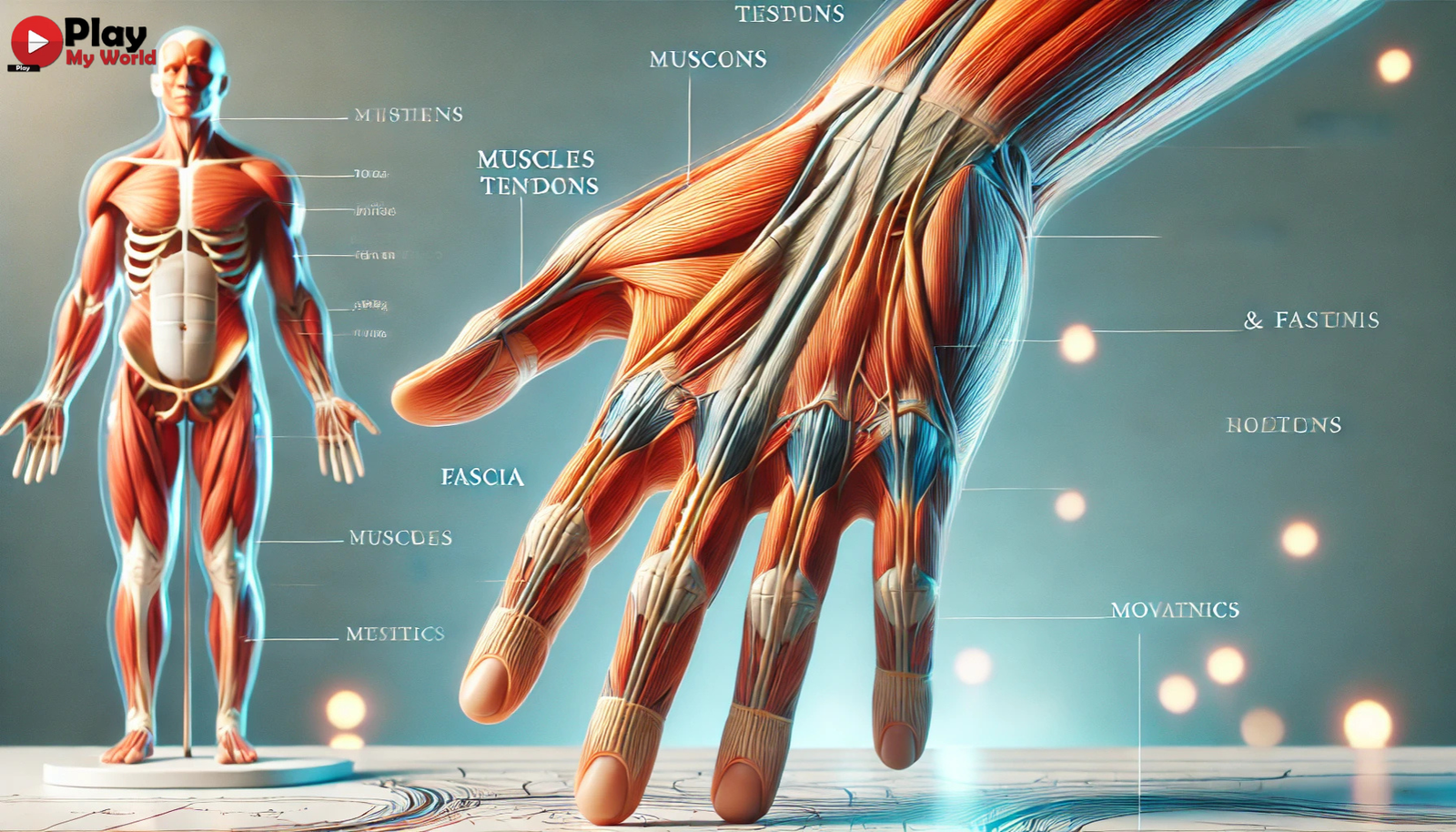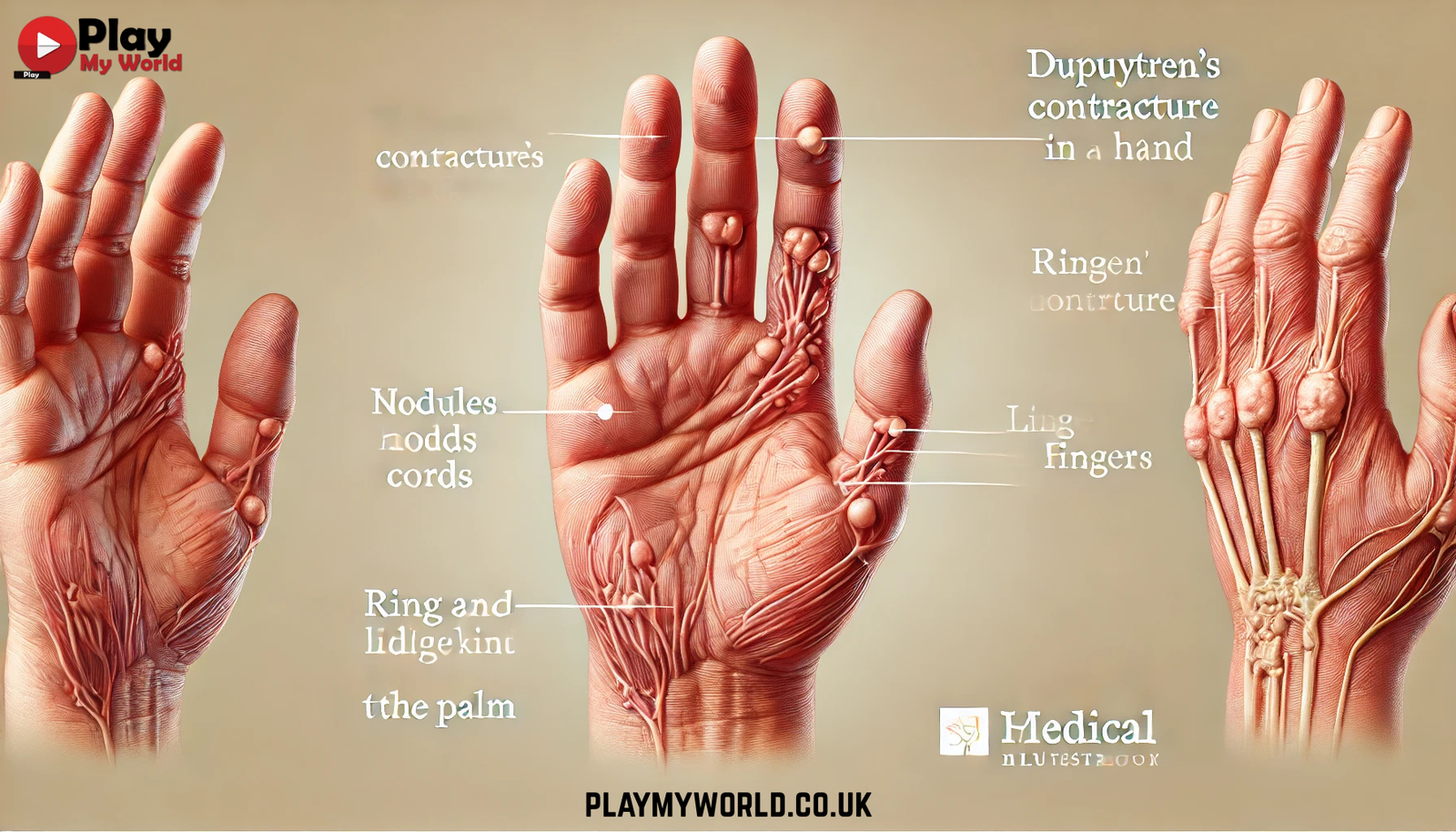Introduction
If you have come across the term Loguytren, you may be wondering what it refers to. While there is no widely recognized medical condition by this name, it is likely a misspelling or variation of Dupuytren’s contracture—a condition that affects the hands by causing thickening of the tissue in the palm, leading to difficulty in straightening the fingers.
This condition, named after the French surgeon Guillaume Dupuytren, affects millions of people worldwide, particularly older adults. It is a progressive disorder, meaning it worsens over time. While it is not a life-threatening condition, it can significantly impact hand function, making everyday tasks such as gripping objects, shaking hands, or even placing the hand flat on a surface more difficult.
In this article, we will explore what Dupuytren’s contracture is, its causes, symptoms, stages, risk factors, treatment options, and how to manage the condition effectively.
What Is Dupuytren’s Contracture?
Dupuytren’s contracture is a hand deformity that occurs when the connective tissue in the palm thickens and tightens over time. This thickening causes the fingers, especially the ring and little fingers, to bend inward toward the palm. As the condition progresses, it becomes harder to straighten the affected fingers, which can limit hand function.
The severity of Dupuytren’s contracture varies from person to person. Some may experience only mild symptoms, while others may develop significant contractures that interfere with daily activities. The condition typically develops slowly, over months or even years, and often affects both hands, though one hand may be more affected than the other.
Causes of Dupuytren’s Contracture
The exact cause of Dupuytren’s contracture is not fully understood, but it is believed to result from genetic and environmental factors. Unlike some conditions that develop due to injury or strain, Dupuytren’s contracture does not seem to be linked to repetitive hand use. Instead, certain biological changes in the fascia, the connective tissue beneath the skin of the palm, lead to the condition’s development.
Genetic Influence
Research suggests that genetics play a significant role in Dupuytren’s contracture. The condition tends to run in families, meaning if you have a close relative with the disorder, you are more likely to develop it as well. It is particularly common in people of Northern European descent, which is why it is sometimes called the “Viking disease.”
Other Risk Factors
While genetics is the strongest predictor, other factors may also contribute to the development of Dupuytren’s contracture:
- Age: The condition most commonly affects people over the age of 50.
- Gender: Men are significantly more likely to develop Dupuytren’s contracture than women, and their symptoms tend to be more severe.
- Ancestry: People of Northern European or Scandinavian descent have a higher risk.
- Medical conditions: Certain conditions, such as diabetes and epilepsy, have been linked to a higher risk of developing Dupuytren’s contracture.
- Lifestyle factors: Smoking and excessive alcohol consumption may increase the likelihood of developing the condition.
Symptoms and Stages of Dupuytren’s Contracture
The symptoms of Dupuytren’s contracture typically develop slowly and may not be immediately noticeable. The condition progresses through several stages:
Early Stage
- Formation of small lumps (nodules) in the palm
- Nodules may feel firm or tender initially but usually become painless over time
- No significant finger bending at this stage
Intermediate Stage
- The nodules begin to form thick cords of tissue
- The affected fingers may start curling inward toward the palm
- Hand function may be slightly affected but remains manageable
Advanced Stage
- The fingers become permanently bent, making it difficult to straighten them
- Daily activities such as gripping objects, typing, or shaking hands become more challenging
- The contracture may cause discomfort or pain in some cases
Dupuytren’s contracture is not typically painful, but the loss of flexibility and finger function can be frustrating and interfere with daily life.
Diagnosis of Dupuytren’s Contracture
A doctor can diagnose Dupuytren’s contracture through a physical examination. The doctor will look for:
- Thickened tissue in the palm
- Inability to lay the hand flat on a table (Tabletop Test)
- Loss of finger mobility and stiffness
In most cases, imaging tests such as X-rays or MRIs are not necessary, as the condition can be diagnosed based on symptoms and physical examination alone.
Treatment Options for Dupuytren’s Contracture
There is no permanent cure for Dupuytren’s contracture, but several treatment options can help manage symptoms and improve hand function. The best treatment approach depends on the severity of the condition.
Non-Surgical Treatments
For mild cases, non-surgical treatments may be effective:
- Observation: If the contracture is not severe, doctors may recommend monitoring the condition without immediate treatment.
- Physical therapy and stretching exercises: Some people find that hand exercises help maintain flexibility, though they do not stop the progression of the disease.
- Steroid injections: Corticosteroid injections may help reduce inflammation and slow the thickening of the tissue, though results are temporary.
Minimally Invasive Treatments
If the contracture begins to affect hand function, doctors may recommend minimally invasive treatments:
- Needle Aponeurotomy (Needle Fasciotomy): A procedure where a doctor inserts a needle into the thickened tissue to break it apart, allowing the fingers to straighten. This is a quick procedure with a short recovery time but may not provide long-term relief.
- Collagenase Injections (Xiaflex): An enzyme-based injection that breaks down the thickened cords, making it easier to straighten the fingers. This treatment is less invasive than surgery but may require multiple injections.
Surgical Treatment
For severe cases where fingers are significantly bent and hand function is impaired, surgery may be necessary:
- Fasciectomy: The surgeon removes the affected tissue to restore finger mobility. This is the most effective long-term solution but requires a longer recovery period.
- Dermofasciectomy: A more extensive procedure that removes diseased tissue and replaces it with a skin graft to prevent recurrence.
Surgery is generally considered when the contracture interferes with daily activities, but it carries risks such as stiffness, scarring, and the potential for the condition to return.
Living With Dupuytren’s Contracture
Dupuytren’s contracture can be frustrating, but lifestyle adjustments and therapy can help manage the condition effectively. Some tips include:
- Hand therapy and exercises: While they cannot cure the condition, regular stretching may help maintain flexibility.
- Using assistive devices: Special grips or adaptive tools can make daily tasks easier.
- Monitoring symptoms: Keeping track of progression and seeking treatment early can help maintain hand function.
Also Read: Naturaplug.com: The Ultimate Guide to Natural Health, Sustainable Living, and Plant-Based Nutrition
Conclusion
If you were searching for “Loguytren,” you may have been looking for Dupuytren’s contracture, a condition that affects the hands by causing tissue thickening and finger contracture. While the condition is not life-threatening, it can impact daily life and hand function over time.
Although there is no cure, various treatment options—including injections, therapy, and surgery—can help improve hand mobility and quality of life. If you notice symptoms such as thickened tissue in your palm or difficulty straightening your fingers, consulting a doctor early can help you explore the best treatment options.




